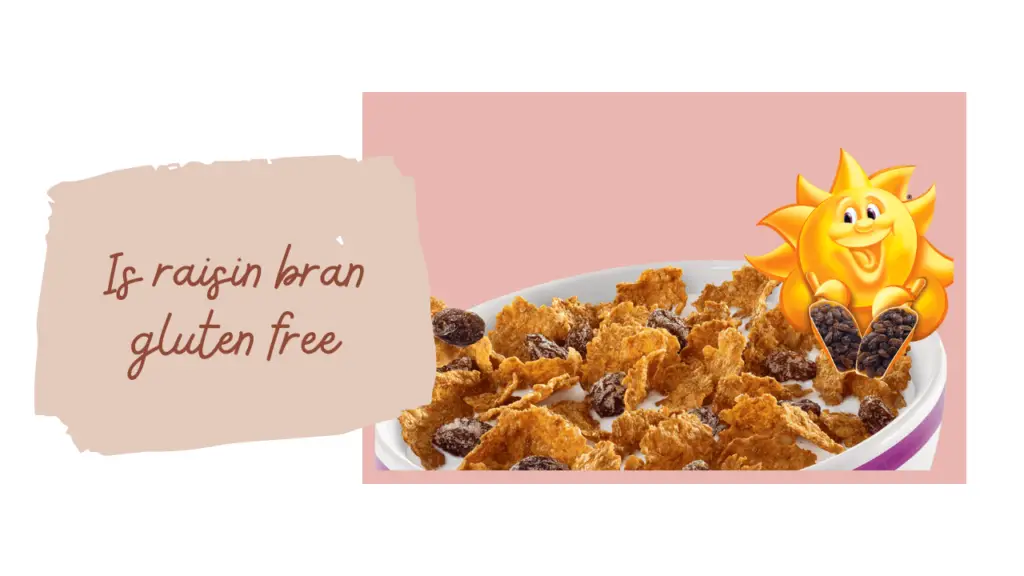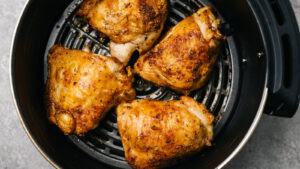When it comes to breakfast cereals, Raisin Bran is a popular choice known for its blend of crunchy bran flakes and sweet, chewy raisins. However, for individuals with gluten sensitivities or celiac disease, the question of whether Raisin Bran is gluten-free is a critical one. Understanding the gluten content in Raisin Bran involves looking at its ingredients, manufacturing process, and potential cross-contamination risks.
Ingredients and Gluten Content
Raisin Bran typically contains whole grain wheat or wheat bran as one of its primary ingredients. Wheat is a major source of gluten, a group of proteins found in grains like wheat, barley, and rye. Therefore, traditional Raisin Bran cereals are not gluten-free. The bran flakes in Raisin Bran, which give the cereal its distinctive texture and high fiber content, are made from wheat, making them unsuitable for a gluten-free diet.
Manufacturing Process
Another aspect to consider is the manufacturing process. Even if a cereal like Raisin Bran were to be made with gluten-free ingredients, it could still be contaminated with gluten during production. This is particularly true if the same facilities are used to process both gluten-containing and gluten-free products. Cross-contamination can occur through shared equipment, airborne gluten, or other means, posing a risk for those with celiac disease or non-celiac gluten sensitivity.
Gluten-Free Alternatives
For those who enjoy Raisin Bran but need to avoid gluten, there are gluten-free alternatives available. Some brands produce gluten-free cereal that mimics the taste and texture of Raisin Bran, using ingredients like brown rice, corn, or other gluten-free grains instead of wheat. These products are often labeled as “gluten-free” and should be certified to ensure they meet the strict standards required for gluten-free labeling.
Traditional Raisin Bran is not gluten-free due to its wheat content. Individuals with gluten sensitivities or celiac disease should avoid regular Raisin Bran and instead look for certified gluten-free alternatives that provide a similar taste experience without the health risks associated with gluten consumption. As always, reading labels and being aware of manufacturing processes is key to maintaining a safe and healthy gluten-free diet.
Navigating Labels and Certifications
It’s essential for consumers to carefully read labels when selecting gluten-free alternatives to Raisin Bran. Products labeled as “gluten-free” must comply with specific FDA regulations, ensuring they contain less than 20 parts per million (ppm) of gluten. This level is generally considered safe for most people with celiac disease. Look for certifications from reputable organizations like the Gluten-Free Certification Organization (GFCO), which has even stricter standards.
Nutritional Considerations
When opting for a gluten-free version of Raisin Bran, it’s also important to consider the nutritional content. Gluten-free cereals can sometimes be lower in fiber and other nutrients compared to their gluten-containing counterparts. Seek out options that are fortified with vitamins and minerals, especially if the cereal is a significant part of your daily diet. Also, be mindful of sugar content, as some gluten-free cereals compensate for texture and flavor differences with additional sugar.
Taste and Texture
One common concern about gluten-free cereals is whether they can truly replicate the taste and texture of their gluten-containing counterparts. Advances in gluten-free food technology have led to significant improvements in this area. Many gluten-free cereals now offer a taste and texture that are very close to traditional Raisin Bran, making the switch easier for those who have had to give up gluten.
Homemade Alternatives
For those who prefer homemade solutions or can’t find a suitable commercial product, making a gluten-free version of Raisin Bran at home is a viable option. Using gluten-free rolled oats or puffed rice as a base, mixed with raisins and sweetened to taste, can provide a similar breakfast experience. Homemade alternatives also allow for complete control over the ingredients, ensuring that the cereal is safe for a gluten-free diet.
In conclusion, while traditional Raisin Bran is not gluten-free, there are many alternatives and strategies available for those who need or choose to avoid gluten. Whether through commercial gluten-free cereals, certified gluten-free products, or homemade recipes, it is possible to enjoy a Raisin Bran-like experience without gluten. As with any dietary change, especially for health reasons like celiac disease or gluten sensitivity, it’s advisable to consult with a healthcare professional or dietitian to ensure nutritional needs are being met.
FAQ: Gluten-Free Raisin Bran
Can people with celiac disease eat traditional Raisin Bran?
No, people with celiac disease should not eat traditional Raisin Bran because it contains wheat, a source of gluten, which is harmful to individuals with celiac disease.
How do I know if a gluten-free cereal is safe?
Look for cereals that are labeled “gluten-free” and ideally certified by a reputable organization like the Gluten-Free Certification Organization (GFCO). This ensures they meet strict standards for gluten content.
Are gluten-free Raisin Bran alternatives less nutritious?
Not necessarily. While some gluten-free cereals might have different nutritional profiles, many are fortified with vitamins and minerals. Always check the nutrition label for specific details.
Is homemade gluten-free Raisin Bran healthier than store-bought?
Homemade gluten-free Raisin Bran allows for more control over the ingredients, which can be healthier depending on your choices. It allows you to adjust sugar levels and avoid preservatives or artificial additives.
Can gluten-free Raisin Bran taste as good as the original?
Yes, many gluten-free cereals now closely mimic the taste and texture of their gluten-containing counterparts, thanks to advancements in gluten-free food production.
Is there a risk of cross-contamination with gluten-free cereals?
There can be a risk if the cereal is processed in a facility that also handles gluten-containing products. Always check packaging for statements about shared facilities and choose products that are certified gluten-free.
Are raisins gluten-free?
Yes, raisins are naturally gluten-free. However, it’s important to check for cross-contamination if they are processed in facilities that also handle gluten-containing products.
Can oats be used in making homemade gluten-free Raisin Bran?
Yes, but ensure that you use oats that are labeled gluten-free. While oats are naturally gluten-free, they are often contaminated with gluten during processing.
Is gluten-free Raisin Bran suitable for weight loss?
Gluten-free Raisin Bran can be part of a weight loss diet if consumed in moderation. However, it’s important to consider the overall caloric and sugar content as part of your diet plan.
How do I store homemade gluten-free Raisin Bran?
Store it in an airtight container in a cool, dry place. It can also be stored in the refrigerator to extend its freshness. Homemade cereals usually have a shorter shelf life than commercial products, so consume them within a few days to a week.




